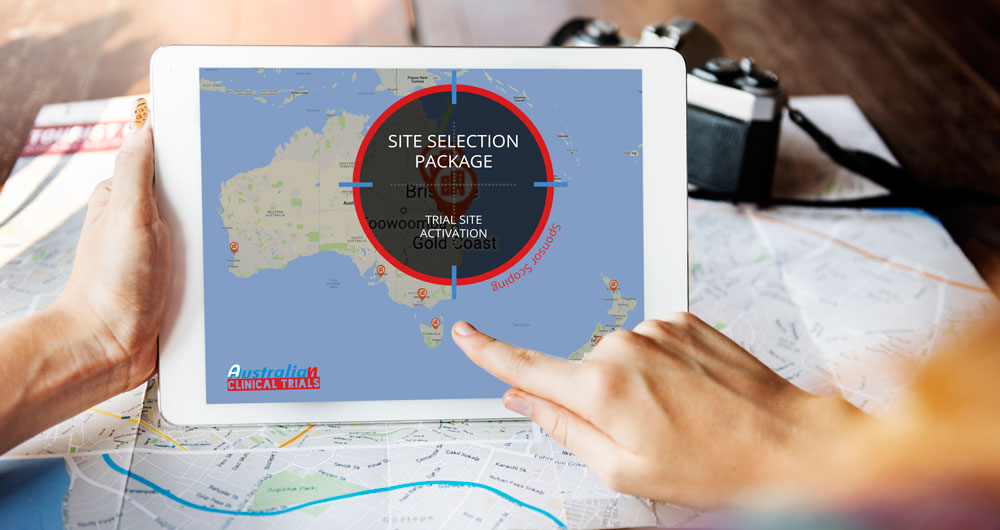Natural Selection: Improve Your Performance During Study Feasibility and Site Selection

When a Sponsor is performing feasibility or site selection, you want your Trial Site at the top of their list. Make it easier for both your team and your Sponsor’s team to get the project started quickly. Grabbing the attention and then impressing a Sponsor at this stage is your entry point into winning new clinical trials from them, both now and in the future. Trial Site selection is not a passive process where you are simply approached and asked for information. Rather, preparation for site selection starts well before you are contacted by a Sponsor. Often, this contact happens as a direct result of your preparation and proactive activities. Read on to find out how you can improve your chances to win new projects and speed Site Initiation at the same time!
How to prepare your Trial Site for its next clinical trial – Awareness & Content
Before the Sponsor has even begun feasibility, there are steps your Trial Site can take to get noticed. There are two aspects to tackle here – awareness and content. Awareness, naturally, is how familiar Sponsors are with your Trial Site. Content is the material you should have prepared and published which showcases exactly what your Site can offer. Both are equally important, as no Sponsor can select a Trial Site they don’t know exists, and won’t select one they know nothing about. Therefore, site selection is an active process that requires planning, knowledge, and a coherent strategy.
Increase your search ranking and exposure
Approach the problem of awareness as if you were recruiting participants for a study. Like participants, many Sponsors exist, and you want to attract the right sponsors based on the information you allow into the public domain. First, establish your online presence with a your own professional website, and free profile page on AustralianClinicalTrials.com. Optimise it such that Sponsors find your Trial Site searching for certain therapeutic and geographical areas. Create content that resonates with Sponsors based on their values and business areas, and promote these everywhere. In addition to your website, publish these on the social media channels that Sponsors frequent (most likely, this will be Facebook, Instagram, Twitter, and Linkedin). Repurpose and adapt your content, making it appropriate for the medium.
Where will you host your Trial Site information?
Another question, intimately tied to awareness, is where to store your Trial Site information. Storing them internally (on a local computer) means that, while your information is secure, only Sponsors that already know of your existence will be able to access the documents. One downside to this is that Trial Sites can tend to have multiple versions of their information floating around. As such it may be hard to know if the version you are using or sending to the sponsor is the most current.
On the other end of the spectrum, one can centrally store their documents online using a dedicated file hosting service or on AustralianClinicalTrials.com. This way, Sponsors will be able to discover your information during an initial search, facilitating further discussion. Oftentimes, online storage can be just as, if not more secure, than storing them locally. This ensures that the available information is current, although anyone can come across your information. If you only want Sponsors to discover this information, you need a way to restrict access to it. At AustralianClinicalTrials.com, we verify all Sponsor accounts, and only these accounts have access to the site selection package you can upload for FREE!
Providing the right information for study set-up
Now that you know where to host your information, you may be asking what exactly should be provided at this initial stage. Sponsors are well aware that poor recruitment is one of the top reasons why a clinical trial is discontinued – between 10 to 30 percent of studies are stopped due to poor recruitment. For a Sponsor unfamiliar with your Trial Site and its capabilities, you need to demonstrate that you will be able to both meet recruitment targets and are equipped to run the study. Demonstrate your experience with previous studies – Sponsors want to know what trials that you’ve helped to completion, and that you have the capacity and experience to conduct trials relevant to them. Links to the ANZCTR are ideal for this. Furthermore, Sponsors consider location as a big factor in recruiting participants. It is ideal to let them know where you are and what kind of demographics you usually attract.
Once you have sufficiently impressed Sponsors with your expertise, give them some more specific, relevant information and how to best get in contact with you. Of the most use to sponsors at this stage is the following information, and as such it should be readily accessible where applicable:
- Contact information for Trial Site, Site staff, your ethics committee, and your pharmacy.
- Formal, legal entity information for filling out CDAs/NDAs, CTRAs, 1572, and indemnity.
- Site facilities, features, and capabilities.
- Equipment Summary containing technical specifications, servicing, and calibration dates.
- Investigator Resumes(s), including medical licenses and indemnity information.
All this information can be easily uploaded into your AustralianClinicalTrials.com Site Selection Package. Providing this information to Sponsors currently doing research on Sites will demonstrate both your initiative and capabilities. This is a first step that facilitates communication between the Sponsor and yourself, and reduces time spent on unnecessary communication and file transfers.
Respond appropriately to clinical trial feasibility during the site selection process
From the moment a Sponsor initiates contact with you, anything that is said or provided to the sponsor will have a bearing on whether they decide to choose your Trial Site both now and in the future. The quality of your communication also reflects how you would interact with a potential participant, so it is important that you demonstrate you are capable of running a clinical trial from both a technical and social angle. Therefore, be responsive when a Sponsor contacts you so that they don’t lose interest and look elsewhere. Once talks progress, get your team involved in meeting the Sponsor too. This will demonstrate you are willing and eager to run and complete the clinical trial.
When a Sponsor asks about your Trial Site, be open and forthcoming with the information you provide. Ensure the information you provide is both accurate and consistent – an eye for detail is something Sponsors look out for. As mentioned earlier, an easy way to ensure this is to have an access point online for all your files. Point the Sponsor to where your files are located, and ensure they are able to be viewed easily. Rapid provision of your Trial Site’s Selection Package details will assist monitors with pre-study / site qualification visits and ethics submission. This keeps you fresh in the Sponsor’s mind and will demonstrate your level of forethought and organisation.
Apart from the documents listed above, there are more specific sets of information that you can prepare ahead of time that a Sponsor will require. This could include:
- Previous clinical trial experience
- Trial Site facilities and equipment list
- Clinical trial recruitment strategy and social media policy
- Standard informed consent process and documentation
- Ethics committee details including membership list and key meeting dates
- Local lab accreditation, tests, and normal ranges
- Pharmacy contact list and fee structure
- Full Trial Site staff contact list
- Legal entity details and fee structure
Mostly likely you have been asked for at least some of this information previously. It is also possible to upload this information to your AustralianClinicalTrials.com Site Selection Package. Readily available information means that it can be provided quickly. As you are not rushing to gather this information and present it to the Sponsor, there is also less chance of omitting details or making errors.
Following up with the Sponsor (or CRO) post selection
No matter what happens after site selection has ended, there is always something more you can do to impress Sponsors. If you were selected, congratulations! You can assure the Sponsor they have made the right choice by maintaining the same level of communication and enthusiasm you had during the selection process. An efficient study start-up process requires clear and timely communication between Trial Site and Sponsor.
If your Trial Site was not selected, ask what factors led the Sponsor to make that decision. In doing so, you will receive invaluable feedback on what your Trial Site should focus on improving in the future. It will also demonstrate to the Sponsor that your Trial Site is willing to grow and improve, meaning they will be more likely to keep your Trial Site in mind for future, more suitable projects.
Finally, make note of any information that the Sponsor asked of you which was not already part of the information you had uploaded. Ensure you find the appropriate file to which you can add this information, or create a new file if it warrants a new section. Don’t forget to then reupload it to the online storage solution of your choice.
Do you need templates for how to present your Trial Site selection information, or a place to store them? AustralianClinicalTrials.com can provide you with help and guidance, in addition to a FREE, online location to store your documents. Only verified Sponsors & CROs will be able to access this information, ensuring the information you provide is only seen by the right people. If you are curious to learn more or would like help getting started, contact us today and simplify the Trial Site selection process!
References
- Prevalence, characteristics, and publication of discontinued randomized trials. JAMA 2014;311:1045–51.doi:10.1001/jama.2014.1361
- Predicting Low Accrual in the National Cancer Institute’s Cooperative Group Clinical Trials. J Natl Cancer Inst 2016;108:djv324.doi:10.1093/jnci/djv324
- Achieving sufficient accrual to address the primary endpoint in phase III clinical trials from U.S. Cooperative Oncology Groups. Clin Cancer Res 2012;18:256–62.doi:10.1158/1078-0432.CCR-11-1633


